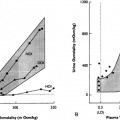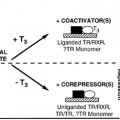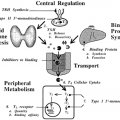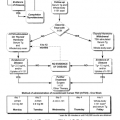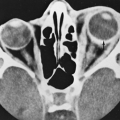ACROMEGALY
By the time a patient with a growth hormone (GH)–secreting pituitary adenoma seeks the advice of a neurosurgeon, the diagnosis is usually obvious, and the need for therapy is urgent. Left untreated, this type of tumor produces metabolic disturbances with deleterious consequences and is associated with increased mortality.
The surgical options for the treatment of GH-secreting pituitary tumors include craniotomy or transsphenoidal surgery,28,29 either for removal of the entire pituitary gland or for selective removal of adenomatous tissue. Irradiation, first used for the treatment of acromegaly in 1909, still provides an alternative to surgical intervention (see Chap. 22).
ENDOCRINE EVALUATION
The evaluation of a patient with suspected acromegaly begins with a determination of the fasting GH level along with a complete assessment of anterior pituitary function (see Chap. 17). Additional testing should include the measurement of serum insulin-like growth factor-I (IGF-I, somatomedin C). Failure of suppression of GH levels to <3 ng/mL after oral administration of glucose can be helpful diagnostically, especially in patients with normal fasting GH or IGF-I levels who appear to be clinically symptomatic. A paradoxical rise in GH levels is seen after the intravenous administration of TRH in half of the patients. This test can be included in the preoperative evaluation.
SURGICAL DECISION MAKING
First-line therapy for patients with acromegaly should be transsphenoidal surgery, especially if a microadenoma or small macroadenoma without invasion of the cavernous sinus is present.30 Medical therapy as a primary treatment modality should be reserved for those in whom surgery cannot be safely undertaken.
SURGICAL RESULTS
In the postoperative evaluation of the patient with acromegaly, the goals are a fasting GH level of <5 ng/mL and normalization of the IGF-I level. The restoration of normal GH dynamics, with a glucose-induced suppression of the serum GH level to <3 ng/mL after an oral glucose load, is desirable; however, in the author’s experience, the absence of such normalization does not necessarily imply residual tumor or recurrence. Importantly, normalization of GH and IGF-I levels may first occur as long as 3 to 6 months after surgery. Thus, if these values are elevated in the immediate postoperative period, a failure of surgery is not inevitable.
Stay updated, free articles. Join our Telegram channel

Full access? Get Clinical Tree


